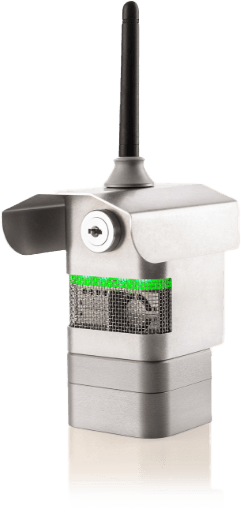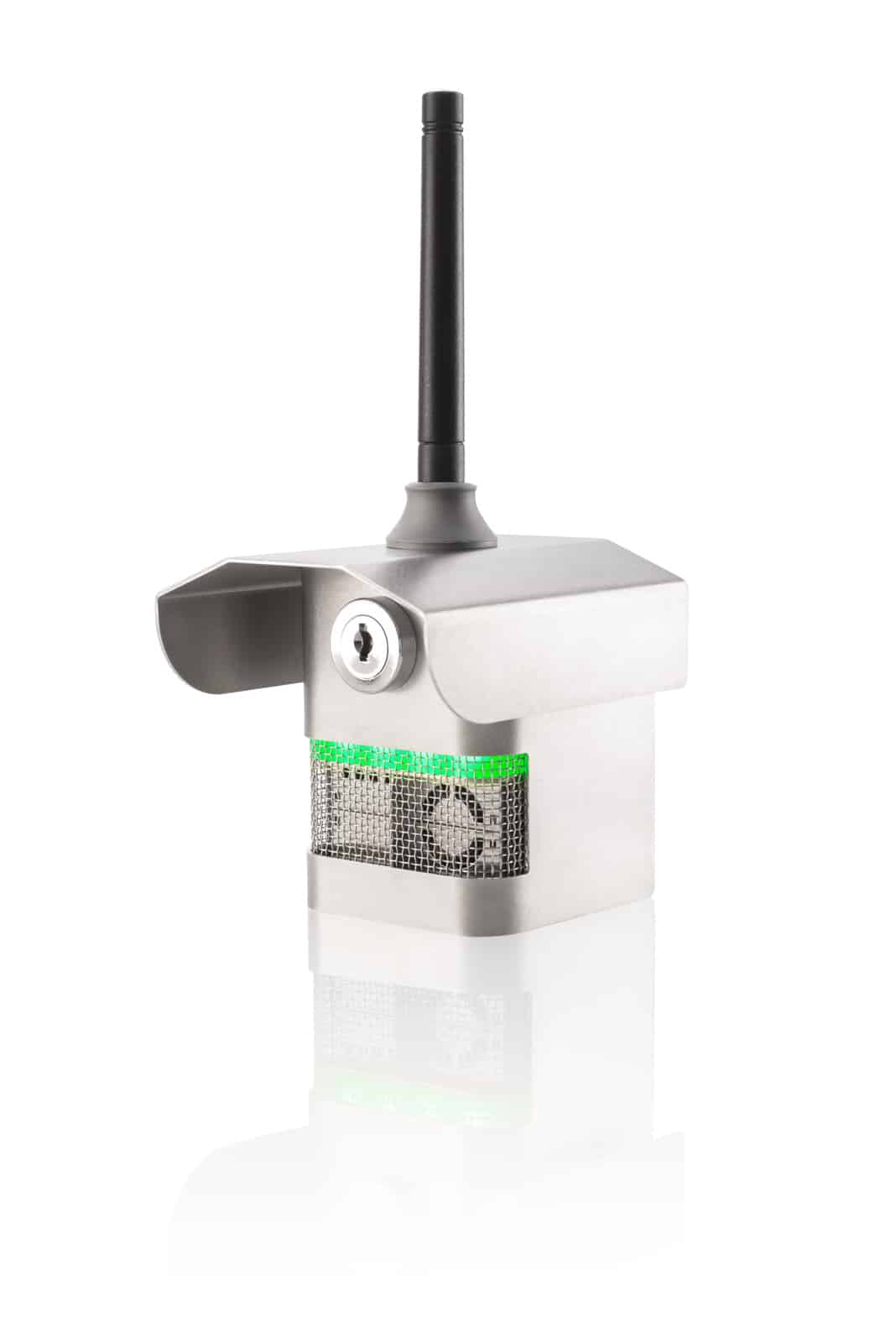In October 2018, the Institute of Air Quality Management (IAQM) published “Guidance on Air Quality Monitoring in the Vicinity of Demolition and Construction Sites”. This document recommends the use of either a site-specific action level or a generic action level for PM10 of 190 μg/m3 averaged over one hour, above which an alert should be triggered and sent to the site manager. This guidance is what consultants and site operators are expected to follow.
In September 2025, IAQM issued Position Statement “Use of Low-Cost Sensor Systems for PM10” highlighting a very important topic related to accuracy of measurements when using small sensors for carrying out professional assessments.
Airly has reviewed the recent statement and we welcome this discussion and share the IAQM’s goal of ensuring that monitoring systems are reliable, accurate, and “fit-for-purpose”.
Airly’s monitoring systems are robustly designed to meet the specific challenges of construction site monitoring and are fully capable of supporting effective dust management strategies. While we understand the IAQM’s concerns are based on the variable performance of some
sensors, we feel that such broad statements risk harming the adoption of next-generation sensor technology as a whole.
Airly (in Pure/Aura sensors) is using the principle of light scattering. Here is a brief overview of the process:
- An internal fan draws an air sample through a measurement chamber.
- A focused laser beam illuminates the particles within this air stream.
- As each individual particle passes through the beam, it scatters the laser light.
- A photodetector measures the intensity and pattern of this scattered light
This data is used to determine the particle’s size (aerodynamic diameter) and to count the number of particles in different size “bins”. The mass concentrations (PM1 , PM2.5 , PM10 ) are then calculated based on this particle count and size distribution. This method is exceptionally accurate for fine and ultrafine particles (PM1 and PM2.5 ), which are typically more spherical and have a more uniform density compared to bigger particles. Coarse particles (particles with diameters between 2.5μm and 10μm), especially from mechanical sources like construction and
trenching (e.g., mineral dust, soil), are often irregularly shaped and have varying densities.
Addressing IAQM Recommendations and Concerns
The IAQM statement outlines several valid recommendations and concerns regarding sensor performance, particularly around high-concentration events, humidity, and data processing. Here is how Airly’s technology is specifically engineered to meet these challenges.
1. On Certification and Performance (IAQM Rec. 3)
The IAQM correctly notes that MCERTS certification alone is not sufficient to demonstrate suitability for this specific application. We agree (especially with 50% REU which translates to uncertainty of 25μg/m3). However, we regard MCERTS as a critical baseline, ensuring traceability and minimum performance consistency across suppliers.
- Airly instruments are MCERTS certified for indicative monitoring of PM10. This certification confirms our system meets a required standard of performance.
- Note that not all MCERTS certifications are equal. Our certification documents demonstrate a Relative Expanded Uncertainty for PM10 of just 21.5%, a value lower than many other suppliers. Notably, some competitors claiming MCERTS certification were not even tested for PM10 performance.
2. On Data Integrity and Peak Events (IAQM Rec. 1 & 5)
The IAQM expresses concern that some sensors use algorithms that “remove peaks as part of cleaning the ‘noise’ in the data” or to account for confounding factors like fog.
- Airly does not use any humidity-related corrections or algorithms that remove or “clean” high-concentration peaks. We believe that removing these peaks defeats the entire purpose of construction site monitoring, which is specifically to detect such events.
- Airly doesn’t use non-transparent correction algorithms, only a single, documented slope correction derived from lab co-location. This correction is established during a 2-week calibration process in our lab against GRIMM EDM-180 certified reference analysers, which
meet the Fixed Measurements criteria outlined in Directive (EU) 2024/2881. This process ensures accuracy without artificially suppressing critical data.
3. On Humidity and Heated Inlets (IAQM Rec. 4)
The IAQM specifically raises concerns about sensors “without heated inlets” and their performance in high humidity.
- Airly sensors actively manage sample conditions to ensure humidity stability. The air sample is actively conditioned before measurement. We use integrated LED lights to heat the sample air by 5°C or more relative to the ambient temperature.
- This slight (>=5°C) temperature increase ensures that the dew point is not exceeded, preventing condensation from occurring. This, combined with the special design of our housing, air inlet, and a heated air intake path with a special mesh, eliminates the influence of air humidity on the overestimation of PM10 concentration measurements.
- Independent evaluation of Airly sensors organised by the Chief Inspectorate of Environmental Protection in Poland, the Voivodeship Inspectorate of Environmental Protection in Krakow, Poland, the AGH University of Science and Technology in Krakow as part of the LIFE integrated project “Małopolska in a healthy atmosphere” confirmed that “no clear influence of humidity on the results provided by Airly devices is visible”. Report on the comparative tests of devices for PM10 particulate matter measurements (non-reference devices and without demonstrated equivalence to reference devices) is available upon request.
- Graphs below show the relationship between the difference in readings of the assessed sensor and the method with demonstrated equivalence, and the relative air humidity for Airly sensors. Black circles mark the determined values; red lines represent the trends plotted using the linear regression method for the humidity ranges of 40–90% and 90–100%, respectively, along with confidence levels. The charts indicate the trend line slope coefficients (a) along with its uncertainty at the 95% confidence level, and the correlation coefficients (R2).

4. On Performance at High Concentrations (IAQM Rec. 3 & 6)
The IAQM’s central concern is that many LCS systems under-report at concentrations approaching the 190 μg/m³ action level. They call on users to seek assurance and manufacturers to publish evidence.
- Based on a few hundreds of sensors located in the UK and several years of co-locating Airly sensors against reference instruments in real-world conditions, we can confirm that our systems are capable of measuring PM10 concentrations above the IAQM-recommended site action level of 190 μg/m³.
- Below is a graph presenting the last quarter of data across multiple construction sites in the UK showing exceedances above 190 μg/m³. It’s clear evidence that Airly systems are capable of measuring above action levels.

- Additionally, upon request we can provide co-location studies [Link to our Quality & Certificates website], from different UK locations, confirming high quality of our systems.

5. On Sensor Deployment and Best Practices (IAQM Rec. 7 & 8)
The IAQM recommends considering the specific purpose of monitoring and using techniques like upwind/downwind comparisons.
- Airly systems are amongst the most compact, lightweight, and easy-to-install sensors on the market. A single person can deploy a device in minutes with no specialist technical expertise, making it simple and cost-effective to set up the upwind/downwind monitoring
networks that the IAQM recommends. - We fully agree that comparing upwind and downwind monitoring location data is critical. Our platform is designed to facilitate this exact type of real-time, alert-based management, allowing site managers to instantly determine if a high-PM10 event is attributable to site
activities or background sources. - Our tools allow our customers to monitor both the existing 190 μg/m3 action level and new or lower thresholds (based on a user wish). This provides flexibility as regulatory expectations evolve. We’re recommending going with lower thresholds because of (a potential under estimation of bigger particles, (b) public health impact (as there are no safe levels of air pollution).
Our Commitment
Airly provides a reliable, transparent, and proven solution for construction site monitoring. Our technology is specifically designed to overcome the common pitfalls of other LCS systems by actively managing humidity, preserving peak-event data, and demonstrating proven performance at high concentrations. We remain confident that Airly sensors are a MCERTS-certified, fit-for-purpose tool, enabling site managers to meet their environmental obligations and effectively implement the IAQM’s guidance.
We encourage any customers with further questions/concerns to contact us directly to schedule a call and discuss these.

